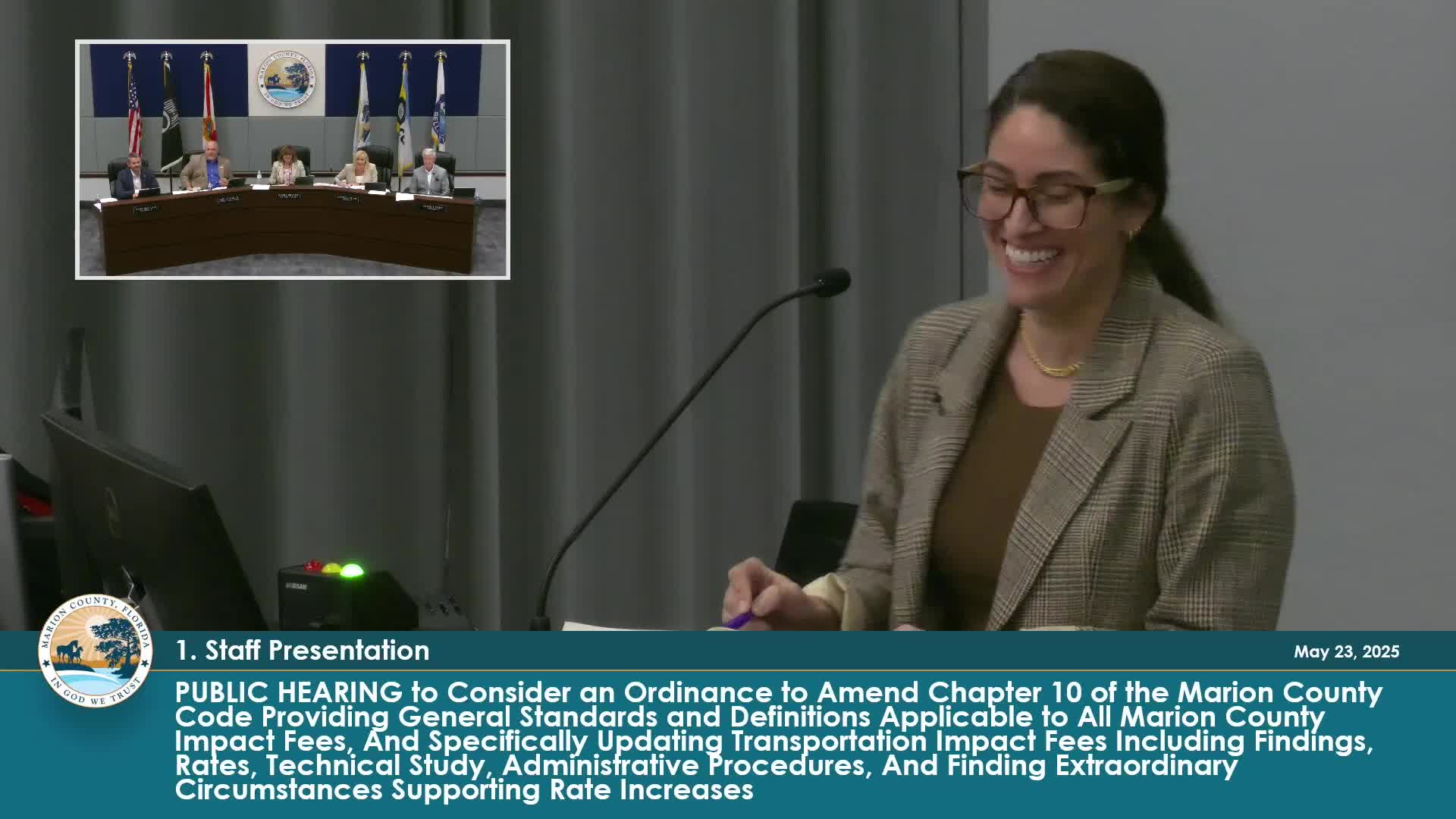Developers challenge Marion County's impact fee ordinance and advocate for legal adjustments
May 23, 2025 | Marion County, Florida
This article was created by AI summarizing key points discussed. AI makes mistakes, so for full details and context, please refer to the video of the full meeting. Please report any errors so we can fix them. Report an error »

Marion County officials gathered on May 23, 2025, for a public hearing focused on proposed changes to transportation impact fees, a topic that has significant implications for local development and the economy. The meeting highlighted concerns from community members and developers regarding the methodology and data used to calculate these fees.
One of the primary issues raised was the reliance on outdated and non-localized data in the impact fee study. Critics pointed out that some of the data used dates back to 1988, which raises questions about its relevance to current conditions in Marion County. This concern was echoed by representatives from On Top of the World and Kolen Built Development, who argued that the county should utilize more recent and localized data to ensure that the fees accurately reflect current economic realities.
Another contentious point was the proposed five-year limitation on impact fee credits. Developers expressed that this cap could hinder growth and negatively impact the local economy, especially in an already uncertain market. They suggested that the county consider eliminating this limitation and adopting a lower impact fee rate, specifically 50% of the calculated rate, to foster a more favorable environment for development.
The discussion also touched on the legal implications of the proposed ordinance. Developers warned that the county must be prepared to defend its decisions in court, emphasizing that the burden of proof lies with the county to demonstrate compliance with state law. They urged the county to take the time necessary to refine the ordinance, suggesting a two-week continuance to allow for further collaboration and adjustments.
As the meeting concluded, the call for updated and localized data, along with a more flexible approach to impact fees, resonated strongly among attendees. The outcome of this public hearing could shape the future of transportation development in Marion County, impacting both residents and businesses alike. The county now faces the challenge of balancing the need for infrastructure funding with the economic realities of its community.
One of the primary issues raised was the reliance on outdated and non-localized data in the impact fee study. Critics pointed out that some of the data used dates back to 1988, which raises questions about its relevance to current conditions in Marion County. This concern was echoed by representatives from On Top of the World and Kolen Built Development, who argued that the county should utilize more recent and localized data to ensure that the fees accurately reflect current economic realities.
Another contentious point was the proposed five-year limitation on impact fee credits. Developers expressed that this cap could hinder growth and negatively impact the local economy, especially in an already uncertain market. They suggested that the county consider eliminating this limitation and adopting a lower impact fee rate, specifically 50% of the calculated rate, to foster a more favorable environment for development.
The discussion also touched on the legal implications of the proposed ordinance. Developers warned that the county must be prepared to defend its decisions in court, emphasizing that the burden of proof lies with the county to demonstrate compliance with state law. They urged the county to take the time necessary to refine the ordinance, suggesting a two-week continuance to allow for further collaboration and adjustments.
As the meeting concluded, the call for updated and localized data, along with a more flexible approach to impact fees, resonated strongly among attendees. The outcome of this public hearing could shape the future of transportation development in Marion County, impacting both residents and businesses alike. The county now faces the challenge of balancing the need for infrastructure funding with the economic realities of its community.
View full meeting
This article is based on a recent meeting—watch the full video and explore the complete transcript for deeper insights into the discussion.
View full meeting